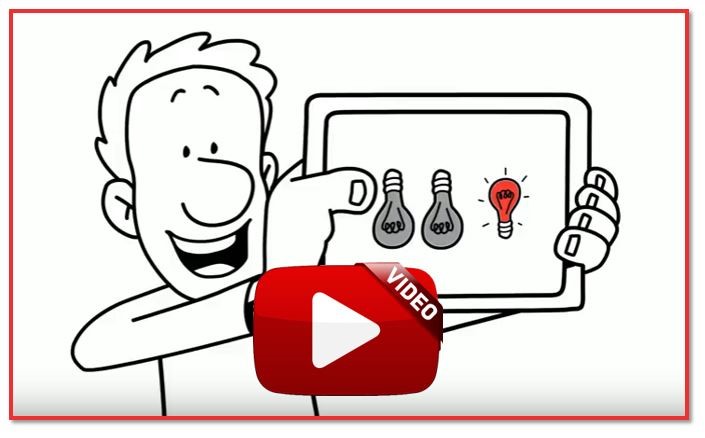Triggers and The Buyer’s Journey
A few years back, I wrote about the process that leads to the buying decision from the seller’s point of view. This is often called the ‘Sales Funnel’ and it was conceptualized in 1898 by E. St. Elmo Lewis. In my article, I argued that “The Sales Funnel Isn’t”. In my view, a pipeline is a better metaphor for the buyer’s journey, and I explained why I believe that’s the case in the article.
Regardless of the metaphor, for the buyer’s journey to start, the potential buyer must move from a passive state (doing nothing) to a more active mindset in pursuit of a solution to current conditions. In other words, something has to sufficiently bother the prospect enough to make him or her believe they need a solution. Sometimes, it is up to the marketer to point out to potential customers that they do have a problem and that a solution exists, and therefore, they should engage in the buying process.
As marketers, we should understand what might be the triggers or events that cause this transition. Understanding and anticipating these changes, and then reacting to them properly, helps marketers engage potential buyers early in their buying experience and increase the chances of making a sale. Let’s look at some of these triggering events that cause someone to shift from a non-buyer to an active buyer:- Breakdown: If the solution being used – be it a machine, software, vehicle, etc. – does not function properly, or at all any longer.
Make sure your solution is marketed to people who find themselves in that position.
- Changing Conditions: As circumstances change, the prospect might not have a solution or what they have currently might be insufficient. Growth in size (true for families as well as companies), new technology, competitive environment, and changing laws / regulations are all examples where the buyer might be motivated to look into acquiring a new and better solution that fits their new condition.
Do you know when these are about to happen in your industry? Be certain to let prospects know of your solution and provide them with easy access to it when these conditions change.
- Prestige: Both consumers and business buyers sometimes purchase a product (or service) because it makes them feel better about themselves and their condition, especially relatively to others.
Do you know who might be motivated to buy what you offer to satisfy that need? Take the necessary marketing steps to address the need for that self-image boost.
If you would like to understand your buyers’ journeys better, and position yourself well to address these events when they happen, Fractional CMO & Marketing will be happy to help – just contact us!
Duke Merhavy, MBA, Ph.D.
President & Chief Marketing Officer
What Is Fractional CMO & Marketing?
Fractional CMO & Marketing is ‘Your Outsourced Marketing Department’ when you need expert marketing leadership and marketing services to accelerate growth and improve profitability, but you’re not quite ready to hire a full-time Chief Marketing Officer or your own marketing department. Our unique arrangement is the most efficient, innovative, and cost-effective formula for you. Click on the image to the left to watch a short video.We Help When You Need To:
- Generate more of the right kind of leads
- Close more sales faster
- Get repeat sales
- Formulate a more effective message
- Produce powerful sales tools
- Establish brand awareness, recognition, and preference
- Differentiate your brand from the competition
- Improve customer satisfaction and loyalty
- Develop lasting relationships with customers
- Introduce new products
Marketing Lingo: Email Marketing Automation
An email, or series of emails, that is sent after an email recipient takes a certain action, is referred to as email marketing automation. The specific act taken by the recipient could be subscribing to an email list, opening an email, clicking on a link or button, purchasing a product, leaving a review, or something similar that can be tracked and recorded for future marketing purposes. An advantage of email marketing automation is that it saves you time by having a system in place to automatically interact with a prospect who has shown interest or a contact who has become a customer. As your company grows, these ‘triggered’ communications are able to make each contact feel special, whether you have 100 or 100,000 in your list.
Email marketing automation combines contact lists, specified actions, and tailored responses to create a more personalized communication experience, since you choose the sequence, number of emails, and specific subject matter of the communication. As soon as it is created and programmed into your email marketing software, the campaign will be sent according to the schedule you have chosen. It does necessitate some work and advanced preparation though, so you’ll need a well-thought-out plan to get started. Some common examples of email marketing automation include welcome emails, birthday and anniversary emails, monthly newsletter releases, blog article publications, events (such as webinars or monthly educational releases), new product introductions, or asking for reviews.
* ‘Marketing Lingo’ is a regular column in which we define, or otherwise explain, terms often used in marketing but not necessarily correctly or properly by some
Email Marketing Best Practices – Part 1
As a small to medium-sized business owner, you’re used to handling multiple priorities at once. Hopefully, since your energy and time needs to be devoted to steering the company, you’ve engaged Fractional CMO & Marketing to handle one of the most important parts of your business. And if you have, you’ll see that we have implemented some of the best practices listed below when it comes to email marketing (with even more next month that we’ll tell you about then).
1. Using an Email Marketing Platform
Emailing from Outlook or Gmail is cost-effective and simple, but you’ll soon find out that they don’t offer your company the professional impression or branding you desire or need. Also, they don’t have the tools or capabilities to increase your company’s influence and growth. We use professional platforms that make sure you are compliant with CAN-SPAM regulations, your emails contain the information required, are optimized for mobile devices, and that your company appears professional with consistent branding, and also collects information that assists in future marketing endeavors.
In addition, using your own mail server and service to send a high number of emails might flag your domain name as spam and block all emails sent by your company from reaching recipients’ inboxes. Professional ESPs (Email Service Providers) go to great lengths to minimize such outcomes.
The platforms we use also provide the analytics needed to track the effectiveness of email campaigns. Metrics like opens, clicks, email bounces, unsubscribes, and more are available at the click of a mouse, and help us modify future campaigns to increase email recipients’ interest in our digital communications.
2. Permission for Your Emails
Sending emails to anyone is not just a given – you need permission to relay your marketing messages digitally. Anti-spam regulations require it, and getting consent from your recipients means they are interested in receiving the information you are transmitting, and they want to hear from you. For our clients, we facilitate a variety of ways interested people can opt-in to receiving your emails, such as landing pages and contact form sign-ups.
3. Current and Updated Email Lists Are More Cost-Efficient and Effective
Sometimes people change jobs, and that means a new email address… or they may use a new email for an entirely different reason. Undeliverable, unopened, or bounced email addresses mean fewer messages getting to whom you want them to get. Regularly cleaning or “scrubbing” your email lists – like we do in regular intervals – means fewer undeliverable and unopened emails, and therefore, better email metrics (including less spam deliveries) and increased marketing impact.
4. Minimize the Risk of Being Marked As Spam
Most people don’t even check their spam folders, so it’s important to engage the services of a firm (like Fractional CMO & Marketing) that uses vetted email marketing services and knows the best practices for landing in the inbox or primary folder. If your emails are marked as spam, you could have more issues than just your emails not being seen by your customers and prospects.
The earlier you employ anti-spam techniques, the better. That’s not to say it’s ever too late to work with a professional, experienced email marketer – it just means that once you do, there might be a period of time needed for your email metrics to improve. This is because frequently showing up in the spam folder lowers your company’s reputation with email service providers. Likewise, if you choose an email marketing platform that lands in spam repeatedly, and isn’t careful about keeping an eye on metrics and making changes as needed, it can have an effect on your organization before you even send out your first email. We keep a watch on the deliverability rate and anti-spam strategies of the providers we utilize, so the emails we write and send for our clients don’t suffer due to the mistakes of others.
Speaking of composing emails, it’s also important to make sure the content you are sending is relevant and resonates with your recipients. If it doesn’t, over time, your digital correspondence will likely be deleted without even being opened (which eventually triggers their system to automatically deliver emails from your domain to spam), or they will mark your emails as spam (because it’s faster and easier than unsubscribing). Either scenario is not good for your email marketing campaigns, but segmenting your lists and customizing the information you send to each segment will be beneficial. We ensure the contents of your emails are specifically targeted.
Next month, we will share the second part of this article. Make sure you keep an eye out for it, because we will discuss more email marketing best practices that you need to know!
Marketing Meme of The Month
Take Advantage of Us
Call us at 888-412-2236 or use the button below to request a complimentary Marketing Needs Assessment, or to ask us a question regarding your most pressing marketing or sales challenges.




